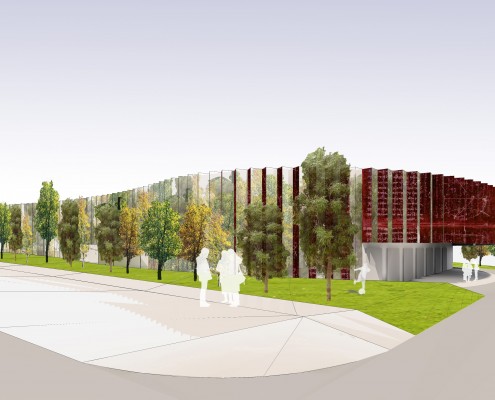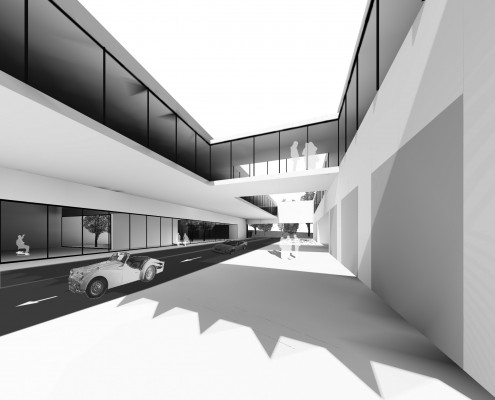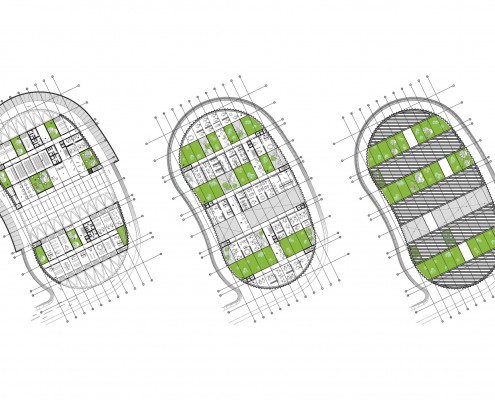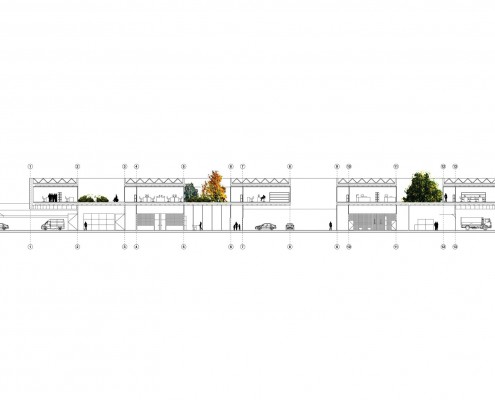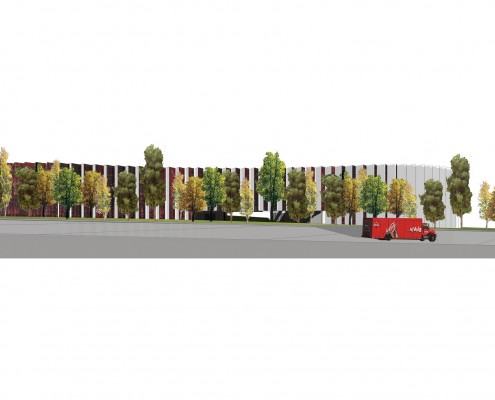FACT SHEET
AccesitArchitectural Competition
Title:Estella Technological Centre
Location:Estella, Navarra, Spain
Year:2007
Program:education
Status:competition
Team:Josean Ruiz Esquiroz
Nacho Ruiz Allén
Lucía Martínez Trejo
TEXT
Miguel de Eguía’s Technology Center in Estella develops from a single entity in
which the complexity needed to hold different uses and programs unfolds.
The current plot present a quite rough topography. In this project we propose an
alteration, softening it and half burying the building to minimize its presence.
Hence, this imprints a mark in the landscape, a mark with a vegetable batter
that acts as a perimetral ring between the platform and the softened slope.
In this lot, a lush forest with different tree species will be planted and will also be
reflected in the building. The reflection of the forest dematerializes the building,
and the building in return multiplies the trees’ presence in a rich set of
reflections.
The building’s skin establishes a double communication with the environment
and with its users. It splits in two directions through the curved geometry:
To one side, it show a reflecting, polished and technological aspect that
duplicates the forest and sky, also blurring the limits of what is built.
To the other, it shows a dark, primitive aspect which reproduces the graphic
designs of Miguel de Eguía in an almost cryptographic form, as if it were a
palimpsest.
Once we go through the undulating skin, the building shows a strictly Cartesian
geometry that organizes the program in two floors.
The building has a very clear striped structure, alternating filled parts and patios
covered with vegetation to let the light in, to facilitate the ventilation and to
provide an introverted universe. All this will favor the concentration required in a
research center.
The anisotropic striped diagram makes it possible to understand the building as
group of modular spaces. The floors have been set out from modules of 5×10
meters where the different programs take place. This modus operandi enables
a rearrangement of the program without altering the structure depending on
future needs.
The horizontal communications are made through longitudinal corridors which
follow the striped diagram’s guidelines. Transversal conections are also made
here and there, building bridges between users of the different programmatic
stripes.


